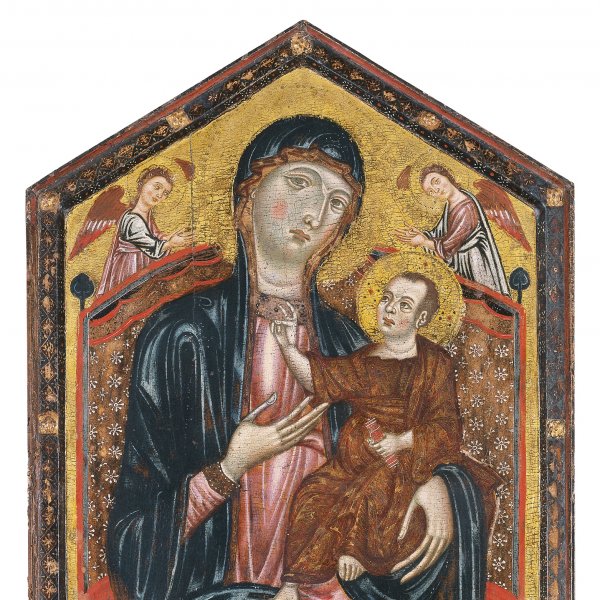Master of the Magdalen
This painter was active in the second half of the 13th century. His oeuvre was first reconstructed by Osvald Sirén, who assembled a homogenous group of works that he attributed to the Master of the Magdalen after a panel depicting that saint and episodes from her life in the Galleria dell’Accademia, Florence. Other scholars including Offner, Coor-Achenbach and Garrison subsequently drew different conclusions and this painter and his workshop continue to be a highly debatable subject with different opinions regarding his corpus. Nonetheless, it is considered that his style took its starting-point from the Florentine Duecento tradition and that he assimilated the influence of Coppo di Marcovaldo and Cimabue. The considerable number of existing works by his hand has led to the assumption that he ran an important workshop of a commercial nature with a large number of clients.
Basing themselves on the principal works attributed to his hand, scholars have defined three phases in his career. The first and stylistically most archaic is represented by The Virgin and Child enthroned, two saints, and six scenes from the life of the Virgin (Musée des Arts Décoratifs, Paris); The Virgin and Child (Fogg Art Museum, Cambridge, Mass.); and The Blumenthal Triptych (The Metropolitan Museum of Art, New York). Dating from the second period, which is notably influenced by Coppo di Marcovaldo, are The Virgin and Child with Angels (Gemäldegalerie, Berlin), and The Virgin and Child enthroned with Saints Dominic, Martin and two Angels (Museo Thyssen- Bornemisza, Madrid). The last phase is represented by Mary Magdalen and Saint Luke the Evangelist (Galleria dell’Accademia, Florence). The idea that this artist was involved in the decoration of the Florence Baptistery due to its lively, narrative style, attention to detail and degree of innovation, all suggestive of his work, has been rejected by some scholars and the issue remains undecided.





